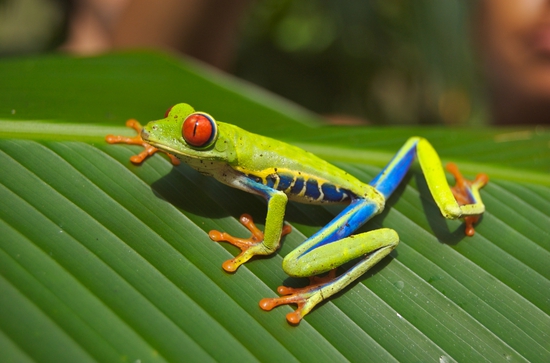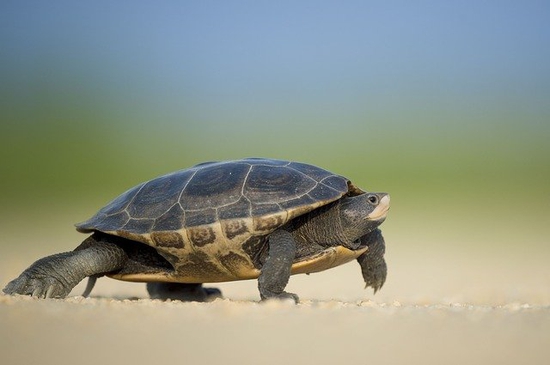
Fastest animals in the world
Top 10 Fastest animals in the world
1. Mexican free-tailed bat
speed= 160 km/h (99 mph)

- The Mexican free-tailed bat or Brazilian free-tailed bat (Tadarida brasiliensis) is a medium-sized bat native to the Americas, regarded as one of the most abundant mammals in North America.
- These outflights, like the one from beneath Congress Avenue Bridge in Austin, Texas, or at Bracken Cave just down the road in San Antonio, can last for hours.
- This bat has a tail that measures half the length of its body
- Tadarida brasiliensis is the scientific name of the Mexican free-tailed bat.
- Mexican free-tailed bats are typically 9 cm (3.5 in) in length and weigh around 7–12 g (0.25–0.42 oz) with females tending to be slightly heavier than males by 1-2 grams for increased fat storage to use during gestation and nursing
2. Cheetah
speed= 109.4–120.7 km/h (68.0–75.0 mph)

- The cheetah can accelerate from 0 to 96.6 km/h (60.0 mph) in under three seconds, though endurance is limited: most cheetahs run for only 60 seconds at a time.
- The cheetah is also the only cat that cannot retract its claws, providing more traction.
- A combination of leg length, muscle size and a long stride gives the cheetah the ideal body for running across land, said John Hutchinson, a professor of evolutionary biomechanics at the Royal Veterinary College in London
- The cheetah occurs in a variety of habitats such as savannahs in the Serengeti, arid mountain ranges in the Sahara and hilly desert terrain in Iran.
- They have been widely depicted in art, literature, advertising, and animation.
3. Pronghorn
speed= 88.5 km/h (55.0 mph)
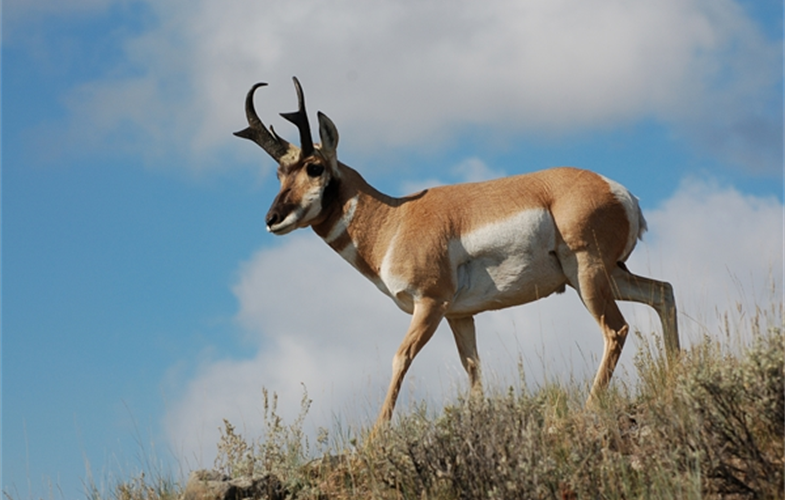
- The pronghorn (American antelope) is the fastest animal over long distances; it can run 56 km/h for 6 km (35 mph for 4 mi), 67 km/h for 1.6 km (42 mph for 1 min), and 88.5 km/h for 0.8 km (55 mph for 0.5 mi).
- Ranging from Canada to California the pronghorn is not only the second-fastest land animal but also has the stamina to run at pace over long distances.
- Pronghorns keep their mouths open slightly when they run, which allows them to take in extra oxygen.
- As a member of the superfamily Giraffoidea, the pronghorn's closest living relatives are the giraffe and okapi.
- They are found in Canada, the USA and Mexico, and their ability to run both fast and for very long periods allows them to comfortably outpace pursuing coyotes and bobcats.
4.Springbok
speed= 88 km/h (55 mph)
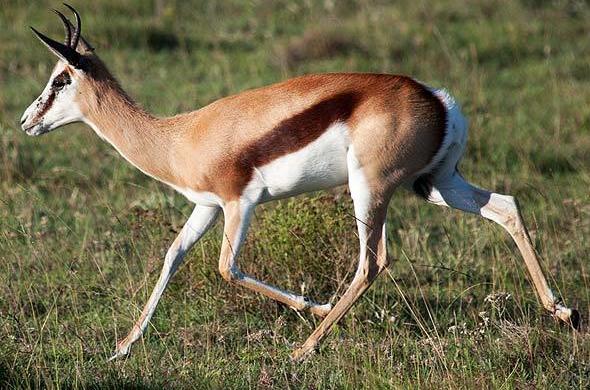
- The springbok, an antelope of the gazelle tribe in southern Africa, can make long jumps and sharp turns while running.
- Aside from their speed – which they can maintain only for short distances – their special skills are 3 meter high bounce-like jumps, and sharp turns whilst running at pace, enabling them to shake off chasing predators.
- It is the symbol and nickname of the national rugby team of South Africa.
- The International Union for Conservation of Nature and Natural Resources classifies the springbok as a least concern species.
- Both sexes also have black, curved, lyre-shaped horns. Larger males can have horns 36-48cm in length.
5. Wildebeest
speed= 80.5 km/h (50.0 mph)

- There are two species of wildebeest found in East and Southern Africa – the blue wildebeest and black wildebeest – both of which are surprisingly fast for their size.
- Wildebeests eat grasses and migrate up to 995 miles each year in search of the best food and water sources.
- In East Africa, the blue wildebeest is the most abundant big-game species; some populations perform an annual migration to new grazing grounds, but the black wildebeest is merely nomadic.
- Both are extremely fast runners, which allows them to flee from predators.
- They are among the most specialized and successful of African herbivores and are dominant in plains ecosystems.
6. Lion
speed= 80.5 km/h (50.0 mph)
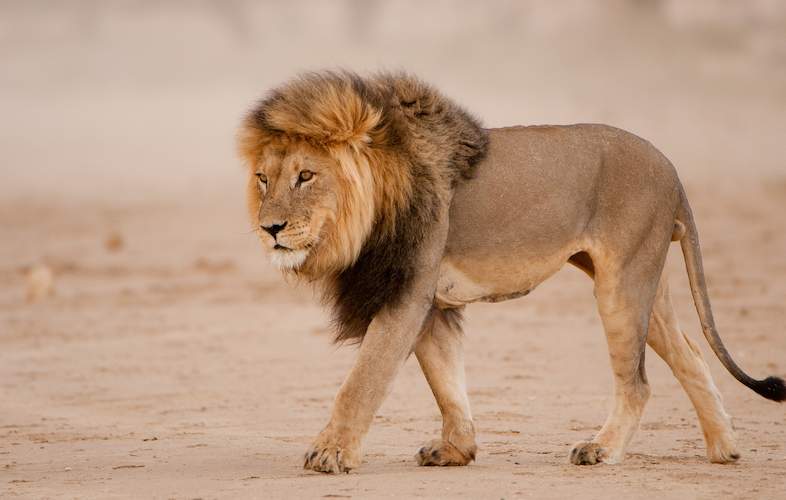
- The lion is the second fastest wild cat with a top running speed of 80.5 km/h, though only for very short bursts.
- Like the cheetah, the lion can only manage their top speed for short bursts, meaning they need to stalk close to their prey and work as a team to ensure a successful hunt.
- One of the most widely recognised animal symbols in human culture, the lion has been extensively depicted in sculptures and paintings, on national flags, and in contemporary films and literature
- Historically, they ranged across much of Europe, Asia, and Africa, but now they are found mainly in parts of Africa south of the Sahara.
7. Blackbuck
speed= 80 km/h (50 mph)
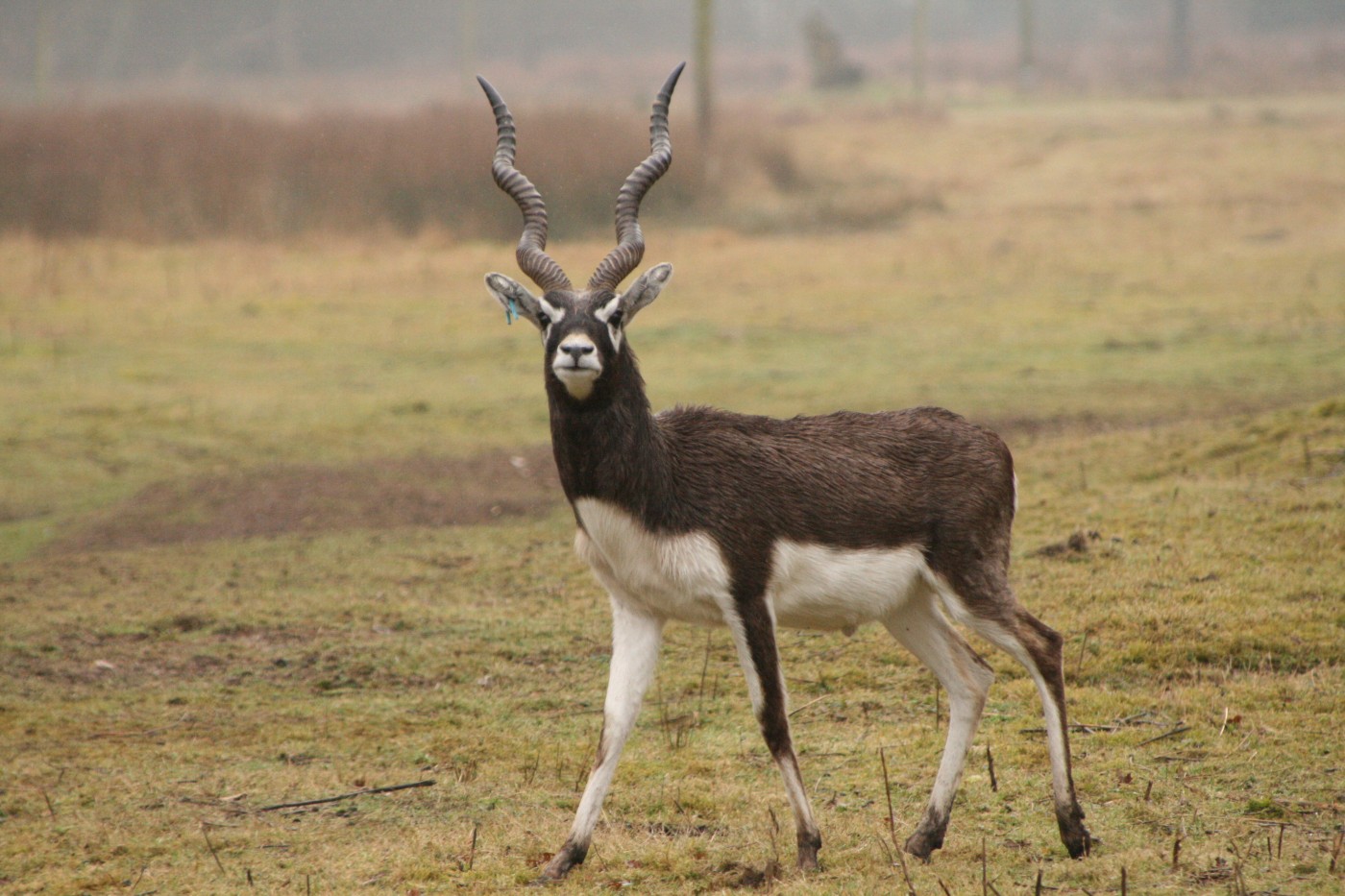
- Male and female blackbucks have distinctly different appearances.
- Because of the male’s impressive horns, blackbuck are sadly a popular trophy animals for hunters.
- The blackbuck is active mainly during the day.
- The antelope is native to and found mainly in India, while it is locally extinct in Pakistan and Bangladesh.
- The rest of their bodies are brown, and their undersides are white.
8. Thomson's gazelle
speed= 80 km/h (50 mph)

- Thomson's gazelles, being long-distance runners, can escape cheetahs by sheer endurance
- Grant’s gazelles are sometimes confused with Thomson’s.
- The Thomson's gazelle can reach speeds of 80–90 km/h (50–55 mph). It is the fourth-fastest land animal, after the cheetah (its main predator), pronghorn, and springbok.
- On Grant’s gazelles, the patch always extends above the tail.
9. Hare
speed=80 km/h (50 mph)

- Hares can reach maximum speeds of 35 mph (56 km/h) in short distances of approximately 90 meters, and a top speed of 50 mph (80 km/h) for about 20 meters.
- Similar in form to common rabbits, hares have longer ears and live solitarily or in pairs above ground, hence the need for their speed.
- Five leporid species with "hare" in their common names are not considered true hares: the hispid hare (Caprolagus hispidus), and four species known as red rock hares (comprising Pronolagus). Conversely, jackrabbits are hares, rather than rabbits.
10. Jackrabbit
speed= 72 km/h (45 mph)
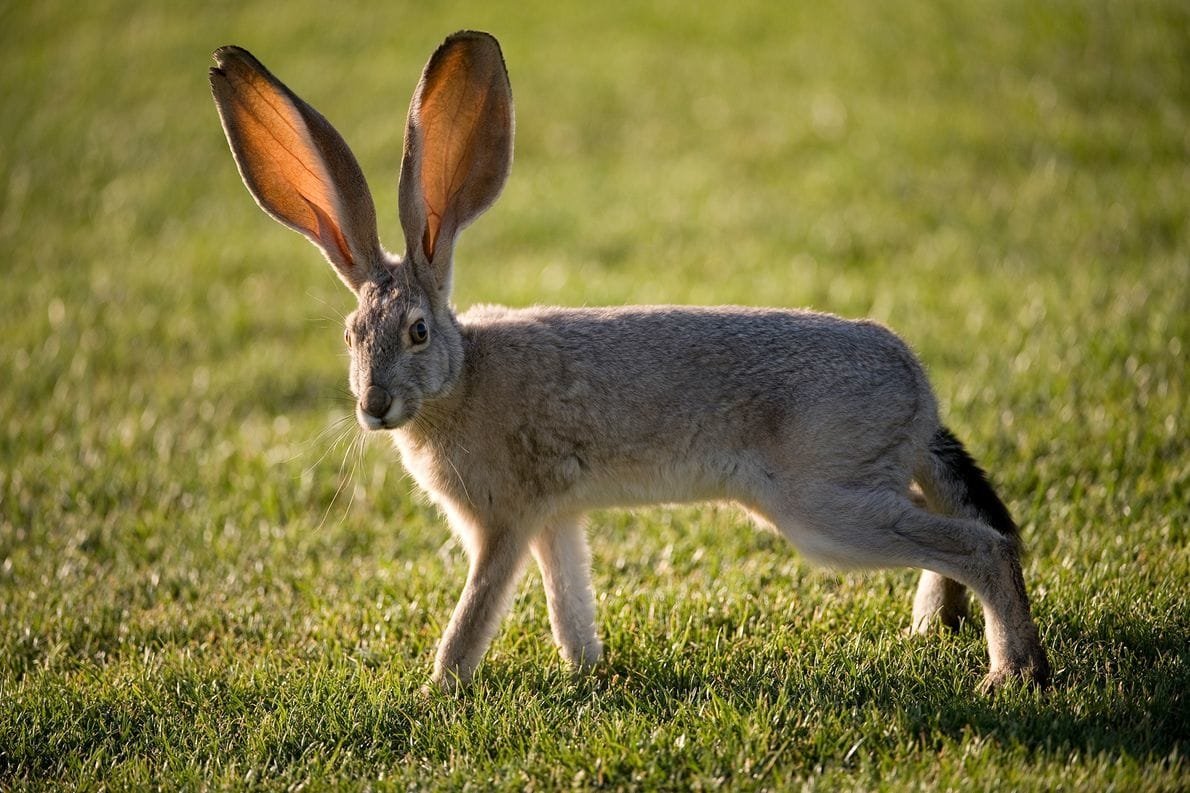
- The jackrabbit's strong hind legs allow it to leap 3 m (9.8 ft) in one bound; some can even reach 6 m (20 ft).
- They use these leaps and a zigzag running style to evade their many predators, including coyotes.
- The hares host many ectoparasites including fleas, ticks, lice, and mites; for this reason, hunters often avoid collecting them.
- The black-tailed jackrabbit is an important prey species for raptors and carnivorous mammals, such as eagles, hawks, owls, coyotes, foxes, and wild cats.
| Animals | Speed |
| 1. Mexican free-tailed bat | 160 km/h (99 mph) |
| 2. Cheetah | 109.4–120.7 km/h (68.0–75.0 mph) |
| 3. Pronghorn | 88.5 km/h (55.0 mph) |
| 4.Springbok | 88 km/h (55 mph) |
| 5. Wildebeest |
80.5 km/h (50.0 mph) |
| 6. Lion | 80.5 km/h (50.0 mph) |
| 7. Blackbuck | 80 km/h (50 mph) |
| 8. Thomson's gazelle | 80 km/h (50 mph) |
| 9. Hare | 80 km/h (50 mph) |
| 10. Jackrabbit | 72 km/h (45 mph) |
Blog Upload on - Dec. 14, 2021
Views - 8125
0
0 Comments

Blog Topics
Bakra Mandi List ,
इंडिया की सभी बकरा मंडी लिस्ट ,
बीटल बकरी ,
Beetal Goat ,
सिरोही बकरी ,
Sirohi Goat ,
तोतापुरी बकरी ,
Totapuri Breed ,
बरबरी बकरी ,
Barbari Breed ,
कोटा बकरी ,
Kota Breed ,
बोर नस्ल ,
Boer Breed ,
जमुनापारी बकरी ,
Jamnapari Breed ,
सोजत बकरी ,
Sojat Breed ,
सिंधी घोड़ा ,
Sindhi Horse ,
Registered Goats Breed Of India ,
Registered cattle breeds in India ,
Registered buffalo breeds in India ,
Fastest Bird in the World ,
Dangerous Dogs ,
Cute Animals ,
Pet Animals ,
Fish for aquarium ,
Fastest animals in the world ,
Name of birds ,
Insect name ,
Types of frog ,
Cute dog breeds ,
Poisonous snakes of the world ,
Top zoo in India ,
Which animals live in water ,
Animals eat both plants and animals ,
Cat breeds in india ,
Teddy bear breeds of dogs ,
Long ear dog ,
Type of pigeons ,
pabda fish ,
Goat Farming ,
Types of parrot ,
Dairy farming ,
सिंधी घोड़ा नस्ल ,
बोअर नस्ल ,
Persian Cat ,
catfish ,
बकरी पालन ,
poultry farming ,
डेयरी फार्मिंग ,
मुर्गी पालन ,
Animals ,
पब्दा मछली ,
Buffalo ,
All animals A-Z ,
दुनिया के सबसे तेज उड़ने वाले पक्षी ,
पर्सियन बिल्ली ,
What is Gulabi Goat ,
What is Cow ? ,
भैंस क्या होती है? ,
गुलाबी बकरी ,
गाय क्या होती है? ,
बकरियों का टीकाकरण ,
बीमार मुर्गियों का इलाज और टीकाकरण। ,
Animals Helpline In Uttar Pradesh ,
Animals Helpline In Maharashtra ,
Animals helpline In Punjab ,
Animals Helpline In Madhya Pradesh ,
Animals Helpline In Andhra Pradesh ,
Animals Helpline In Karnataka ,
Animals Helpline In Haryana ,
डॉग्स मैं होने वाली बीमारियां ,
उत्तर प्रदेश पशु हेल्पलाइन ,
दुनिया के दस सबसे सर्वश्रेष्ठ पालतू जानवर ,
Dog Diseases ,
Top Ten Best Pets in The World ,
महाराष्ट्र पशु हेल्पलाइन ,
बकरीद 2022 ,
मध्य प्रदेश पशु हेल्पलाइन ,
बलि प्रथा क्या है ,
Bakrid 2022 ,
What are Sacrificial Rituals ,
गाय मैं होने वाले रोग ,
Cow Desiases ,
भेड़ पालन ,
Sheep Farming ,
कबूतर पालन ,
रैबिट फार्मिंग ,
Gaushala In Uttar Pradesh ,
GAUSHALA IN HARYANA ,
DELHI BIRD & ANIMAL HELPLINE ,
Maharashtra Bird Helpline ,
गौ पालन पंजीकरण ,
बकरी पालन व्यवसाय ,
लम्पी स्किन डिजीज ,
भेड़ पालन व्यापार ,
Lumpy Skin Disease ,
Goat Farming Business ,
भारत में टॉप डॉग्स की नस्लें ,
मछली पालन व्यापार ,
डॉग को कैसे प्रशिक्षित या ट्रेन करें ,
टॉप नैचुरल फूड फॉर डॉग्स ,
Top Natural Foods for Dogs ,
How To Train A Dog ,
Fish Farming Business ,
बकरी के दूध का उपयोग ,
Use Of Goat Milk ,
Sheep Farming Business ,
बकरियों के लिए टॉप 5 सप्लीमेंट ,
Vaccination Of Goat And Sheep ,
Top 5 Supplements for Goats ,
डॉग्स के प्रकार और डॉग्स की सभी नस्लों के नाम की लिस्ट ,
Types Of All Dog Breed Names A to Z ,
Types Of Fish Breed Names A to Z ,
दुनिया के 10 सबसे बड़े जानवर ,
Types of All Goats Breed Name A to Z ,
Top 10 Longest And Heaviest Crocodiles ,
Top 10 Highest Flying Birds ,
Top 10 Largest Snake In The World ,
Top Goats Breeds For Milk ,
Major Diseases In Goats ,
Manx Cat - Cat Without A Tail ,
Top 10 Largest & Heaviest Turtles ,
Top 10 Smartest Dog Breeds ,
Name of 5 Dog that went to Space ,
The role of animals in human culture and religions ,
The role of goats in sustainable agriculture and land management ,
8 Things You Should Never Do To Your Dog ,
Green Anaconda ,
25 Amazing Types Of Snakes ( More Details ) ,
Reticulated Python ,
Black Mamba ,
King Cobra ,
Garter Snake ,
Golden Flying Snake ,
Eastern Tiger Snake ,
Benifits Of Pet Adoption ,
Top 10 Dog Safety Tips ,
Animal Behavior, Thoughts On Choosing A Breed To Raise ,
How To Get Your Dog To Listen To You ,
A to Z List of Bird Names With Picture ,
The 10 Best Dog-Friendly Places To Go In Your India ,
Healthy Habits For Animals ,
डॉग्स में होने वाले रोग ,
गाय में होने वाले रोग ,
मानव संस्कृति और धर्मों में जानवरों की भूमिका ,
बकरियों में होने वाले प्रमुख रोग ,
टिकाऊ कृषि और भूमि प्रबंधन में बकरियों की भूमिका ,




